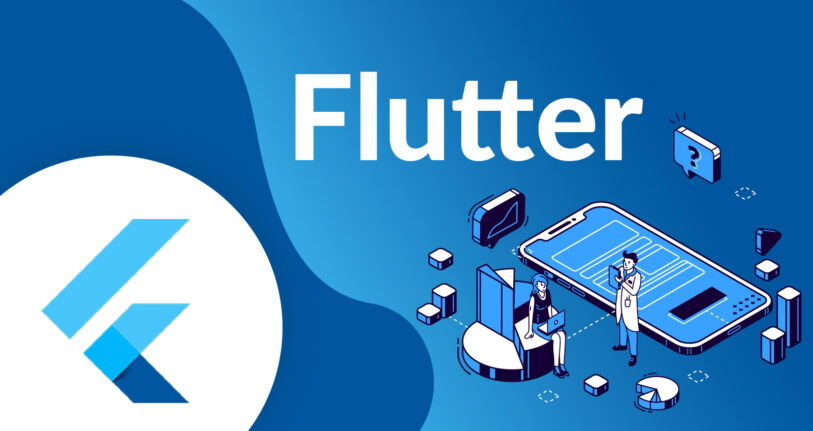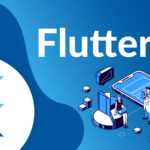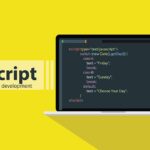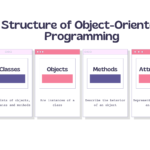What is Flutter?

What is Flutter?
Flutter is an open source framework developed and supported by Google. Front-end and full-stack developers use Flutter to create an app’s user interface (UI) for multiple platforms with a single code base.
When Flutter was launched in 2018, it primarily supported mobile app development. Flutter now supports app development on six platforms: iOS, Android, the web, Windows, MacOS and Linux.
How does Flutter facilitate application development?
Flutter simplifies the process of creating consistent, attractive user interfaces for applications on six supported platforms.
As Flutter is a cross-platform development framework, we will first compare it to native development. Then, we can highlight the features that are unique to Flutter.
Native application development and cross-platform application development
Coding an application for a specific platform, such as iOS, is called native application development. Cross-platform app development, on the other hand, involves creating an app for several platforms using a single code base.
Native application development
Since developers code for a specific platform as part of native application development, they have full access to native device functionality. This results in higher performance and speed than with cross-platform application development.
On the contrary, if you want to launch an application on several platforms, native application development requires more code and more developers. In addition to these costs, the native app development process can be difficult to launch simultaneously on different platforms with a consistent user experience. This is where cross-platform application development frameworks, such as Flutter, can come in handy.
Cross-platform application development
Cross-platform application development allows developers to use one programming language and one code base to create an application for multiple platforms. If you’re publishing an application for multiple platforms, cross-platform app development is less costly and time-consuming than native app development.
This process also enables developers to create a more seamless experience for users across multiple platforms.
This approach can have drawbacks compared with native application development, notably limited access to native device functionality. However, Flutter includes features that make cross-platform application development smoother and more efficient.
Flutter benefits
Here are just a few of the advantages of Flutter as a cross-platform application development framework:
- Near-native performance. Flutter uses the Dart programming language and compiles it into machine code. Host devices understand this code, guaranteeing fast, efficient performance.
- Fast, consistent and customizable rendering. Instead of platform-specific rendering tools, Flutter uses Google’s open source Skia graphics library to render the user interface. This gives users consistent visuals, whatever platform they use to access an application.
- Tools for developers. Google developed Flutter with an emphasis on ease of use. With tools like Hot Reload, developers can preview what code changes will look like, while preserving state. Other tools, such as the widget inspector, make it easier to visualize and troubleshoot user interface configurations.
What programming language is used by Flutter?
Flutter uses the Dart open-source programming language, developed by Google. Dart is optimized for creating user interfaces, and many of its strengths are included in Flutter.
For example, “sound null safety” is a Dart function used in Flutter. Dart’s sound null safety makes it easy to detect common bugs, known as null errors. This feature reduces the time spent by developers on code maintenance, allowing them to concentrate more on creating their applications.
Which widgets are included in Flutter?
In Flutter, developers create user interface configurations using widgets. In other words, everything a user sees on a screen, from windows and panels to buttons and text, is made up of widgets.
Flutter widgets are designed so that developers can easily customize them. To achieve this, Flutter uses a compositional approach. Thus, most widgets are made up of smaller widgets, and the majority of basic widgets have specific purposes. This allows developers to combine or modify widgets to create new ones.
Flutter renders widgets using its own graphics engine, rather than relying on widgets integrated into a platform. In this way, users will benefit from a similar presentation in a Flutter application across platforms. This approach also offers developers flexibility, as some Flutter widgets can integrate functions that platform-specific widgets do not.
Flutter also facilitates the use of widgets developed by the community. Flutter’s architecture supports the use of multiple widget libraries, and Flutter encourages the community to create and manage new widgets.
Types de widgets Flutter
Flutter comes with a rich widget catalog when downloaded. The catalog features 14 categories, including style, Cupertino (iOS-style widgets) and hardware components (widgets that conform to Google’s hardware design guidelines).
Flutter also comes with configurations and themes, allowing developers to create immediately.
How is the Flutter service supported?
Flutter is supported by Google as well as an active open source community on Reddit, Discord, Slack, Stack Overflow and Gitter. Google has been steadily supporting Flutter since its launch in 2018, including the Flutter 3 update, released in 2022, which extended stable support to macOS and Linux.
To further simplify learning Flutter, Google has written extensive documentation and developed numerous tutorials, available on the Flutter website. To get Flutter users involved, Google is also organizing international events, promoting community projects and sponsoring developer challenges. Upcoming events are available on the Flutter website.
The Flutter community has created thousands of third-party packages and excellent tools that simplify the developer experience. These libraries are available at pub.dev.






